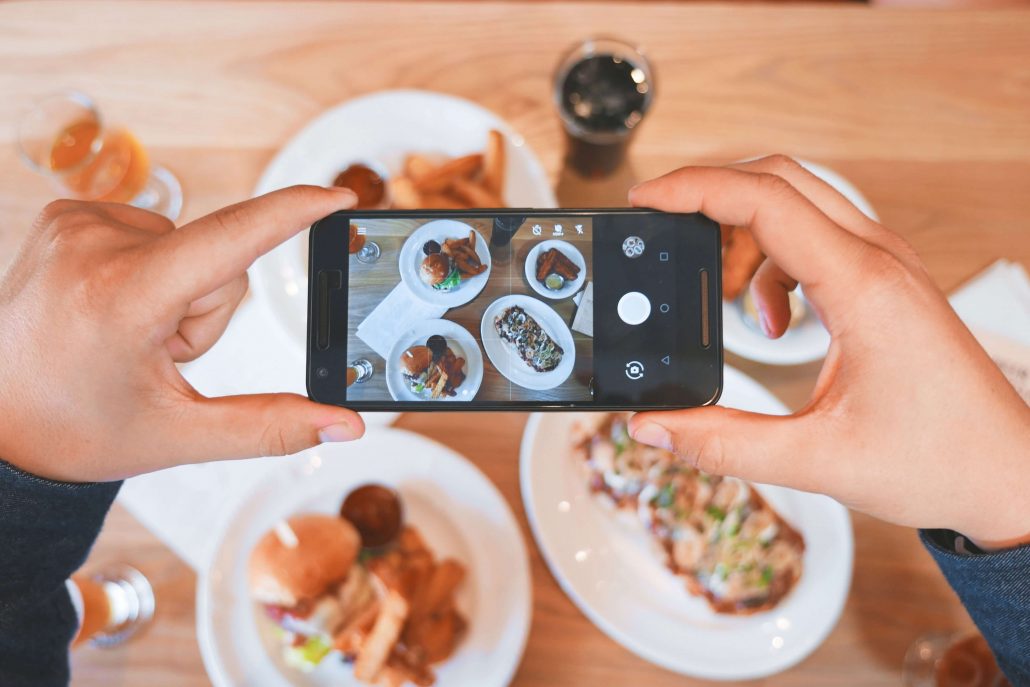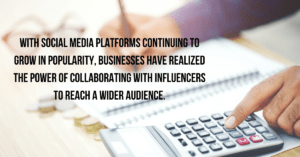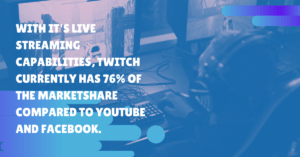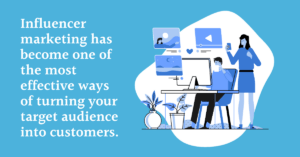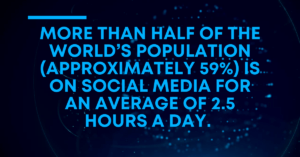Not all influencers are created equal. Even as the influencer market is set to become a $10 billion industry by 2020, the divide between mega-influencers and nano-influencers is a steep one. What separates one breed of influencer from the others?
By sussing out the differences between a mega-influencer, a macro-influencer, and micro-influencer, and a nano-influencer, you can make a more informed decision about what kind of influencer you want to bring onto your next enterprise marketing campaign.
You’ll also have a better idea of how to work with these individual groups of influencers and the benefits – as well as the drawbacks – of each class.
Want a tool that helps you find the best influencer for your brand? That’s Sideqik. Recruit influencers from our database of over 16 million profiles across nine of the world’s largest social networks. Once you’ve found influencers — manage the relationship, measure the impact of their content, and use our tools to grow your community even further all in one place.
Mega-Influencers
 When looking for an influencer to speak for your brand, you’ll want to start at the top of the social media ladder. Here, you’ll find mega-influencers and celebrities. These influencers include names like Will Smith, Rihanna, and so on. You’re most likely to see influencers of this caliber in high-quality perfume ads, beer commercials, or other prime time television advertising campaigns.
When looking for an influencer to speak for your brand, you’ll want to start at the top of the social media ladder. Here, you’ll find mega-influencers and celebrities. These influencers include names like Will Smith, Rihanna, and so on. You’re most likely to see influencers of this caliber in high-quality perfume ads, beer commercials, or other prime time television advertising campaigns.
The power of mega-influencer ambassador engagement often comes more from their fame than from their actual influence. As such, any mega-influencer you bring onto a marketing campaign will have to have extensive experience in social media or more traditional media – movies, for example – in order to be an effective spokesperson for your product. To use a mega-influencer effectively, you’ll need to rely on their face.
Working with mega influencers is more of a partnership as they often have their own brand personas to uphold and promote. With the introduction of social channels as a means for publicity for mega-influencers, what used to be called a “celebrity endorsement” is now just another version of influencer marketing.
Mega-Influencer Pros
Working with a mega-influencer can benefit your marketing campaign in ways such as these:
- Exposure – When you work with a name like Rihanna, you’re going to receive a great deal of attention based solely on the authority that a name like that has garnered.
- Experience – Mega-influencers are usually long-used to the marketing campaign, and they know how to behave on set as well as in the boardroom. You usually won’t have to deal with any temper tantrums while working with a mega-influencer.
Mega-Influencer Cons
On the other hand, no influencer is perfect. Working with a mega-influencer presents a unique set of challenges, including the following:
- Scheduling – Mega-influencers have a lot of people trying to get their attention and a limited amount of time to dedicate to individual projects. No matter how badly you want a specific name on a marketing campaign, you still might lose out to timing.
- Cost – Mega-influencers, thanks to their extensive experience in media, are going to cost your company far more to bring on than an influencer of lesser fame. Most of the time, they’re worth the cost, but you’ll still have to budget accordingly.
- Personal Endeavors – When brands get caught up in celebrity drama, it makes the brand seem complicit in any goings down. Brands never know when even their most unoffending influencers can turn into a brand disaster. For example, 19-year-old beauty influencer Olivia Jade Giannulli was recently removed from the Sephora site after her name was involved in the recent college admission scandal.
Macro-Influencers
 One step down from mega-influencers are macro-influencers. These are people who’ve made a name for themselves outside the world of traditional media, or who are C to D-list actors. In terms of social media, macro-influencers will have a following of between 100,000 and 1 million followers.
One step down from mega-influencers are macro-influencers. These are people who’ve made a name for themselves outside the world of traditional media, or who are C to D-list actors. In terms of social media, macro-influencers will have a following of between 100,000 and 1 million followers.
Vloggers (bloggers who use a video medium like the one presented on YouTube) and game streamers are among the most well-known macro-influencers. Binging With Babish’s Andrew Rea, for example, or Instagram fitness star Whitney Simmons are both macro-influencers who can reach a younger demographic of consumers, thanks to their social media-savvy platforms.
Simmons has worked with The Ritz Carlton and Ulta Beauty in the past, sharing their products with her 952k followers via YouTube and Instagram. Rea, too, has worked with chefs like Roy Choi and Masaharu Morimoto to advertise home ovens and platform builders like SquareSpace to 4 million YouTube followers.
Macro-Influencer Pros
Working with a macro-influencer is less stressful than working with a mega-influencer, though macro-influencer ambassador communities are no less familiar with the demands of a social media-friendly audience and hectic scheduling. That said, the benefits of partnering with a macro-influencer can include these two main points:
- Social Media Outreach – Unlike mega-influencers, macro-influencers have typically built their platforms from the ground up, growing alongside the platforms that they utilize. Not only does this mean their audience is expansive, but their knowledge of social media trends and how to take advantage of them will be extensive.
- Creativity – Someone who’s built their reputation without the help of an agent or while on an ever-changing platform will be unquestionably creative. Used appropriately, macro-influencers can bring their marketing know-how to your business meetings and add an extra spark to the campaign you have in mind.
Macro-Influencer Cons
What challenges should you expect while working with macro-influencers?
- Scheduling – Just like mega-influencers, macro-influencers have content creation schedules they need to stay on top of, along with meetings they need to hold with their own partners.
Micro-Influencers
 As you meander down the social media ladder, you’ll find micro-influencers. Like macro-influencers, they typically reside on social media platforms like YouTube or Instagram. These influencers operate in a niche area. Where macro-influencers dominate fields like makeup or fashion, micro-influencers may locate their footing in DIY design, food, or film critique.
As you meander down the social media ladder, you’ll find micro-influencers. Like macro-influencers, they typically reside on social media platforms like YouTube or Instagram. These influencers operate in a niche area. Where macro-influencers dominate fields like makeup or fashion, micro-influencers may locate their footing in DIY design, food, or film critique.
A micro-influencer’s following typically ranges between 1,000 followers and 100,000 followers. Their audiences are usually consistent, and they’re typically at a plateau point with their following, meaning the retention of that following is almost guaranteed.
Micro-influencers include Jesse Driftwood, a photographer who posted a picture of himself using Audible to social media and found a career when his audience responded positively to the company’s message.
Micro-Influencer Pros
Working with a micro-influencer requires more trust on the part of a large company. Since this influencer’s following is so small and loyal, however, it’s essential to make the most out of the authenticity that niche reach offers.
- Authenticity – That perceived honesty is one of the biggest positives about working with micro-influencers. These influencers, in the eyes of their audience, haven’t been tested by fame and aren’t likely to “sell out” to advertising campaigns. Their product recommendations are more likely to be interpreted as genuine moves made with audiences’ interests at heart.
- Audience Size – You can also enjoy more reasonable growth when you work with a micro-influencer. While they may have smaller audiences, their engagement rates are much higher, according to a study by Gartner. Instead of the risk/reward game you play when bringing on a mega- or macro-influencer, you can trust a micro-influencer’s audience to have a notable, but not monumental, impact on your overall sales.
Micro-Influencer Cons
The challenges of working with a micro-influencer are less substantial than that of their peers, but they’re still present.
- Not For Quick Growth – One downside of a micro-influencer’s smaller audience is that you won’t be able to net quick or expansive growth. Micro-influencers will win you small gains over time. If you’re looking for a big rush of interest in your product, you may want to look higher on the social media ladder.
Nano-Influencers
 Finally, you’ll find nano-influencers alongside the regular joes of social media. Nano-influencers are as likely to be your consumers as they are to be regular social media influencers. Usually, nano-influencers have sway over a community of people that contains less than 1,000 followers. A nano-influencer could be the head of a church, the mayor of a town, or a hometown author.
Finally, you’ll find nano-influencers alongside the regular joes of social media. Nano-influencers are as likely to be your consumers as they are to be regular social media influencers. Usually, nano-influencers have sway over a community of people that contains less than 1,000 followers. A nano-influencer could be the head of a church, the mayor of a town, or a hometown author.
Erin Gee, for example, began to advertise for Fre skincare brand with only 1,200 Instagram followers. Prior to her position with the company, she was a government employee and a spin-class instructor. It’s worth noting that her Instagram following has grown since she started representing Fre. Nano-influencers, it seems, are primed for growth once they’re taken on by a company – a reality which is hardly a bad thing, considering the potential consumer audience they promise to bring in.
Nano-Influencer Pros
Working with a nano-influencer presents most companies with a unique challenge, as well as the opportunity to mold a spokesperson from the ground up. The benefits include the following:
- Learning Experience – Unlike all other types of influencers, nano-influencers will typically have little marketing experience. That means you’ll have the opportunity to teach your nano-influencer how to best market your brand and you won’t have to break any predetermined, bad marketing habits.
- Authenticity – Because nano-influencers’ audiences are relatively small, they’ll be considered an honest source of information by that audience when they advertise your brand.
- Growing Together – As your nano-influencer’s social media following grows, so will your consumer audience.
Nano-Influencer Cons
That said, you may not want to hand-hold a nano-influencer as they start on their marketing career. Some of the less-exciting parts of working with a nano-influencer include the following:
- The Learning Curve – It may take your nano-influencer some time to learn how to best market your product. Until they’re able to produce content on their own, you may have to provide it for them.
- Burst Impact – The size of a nano-influencer’s audiences means that your company won’t see a significant income boost thanks to your campaign. Yes, your ROI should balance out, but if you’re after quick growth, you may want to look elsewhere.
Are you interested in integrating influencers into your next marketing campaign? Take advantage of Sideqik’s all-in-one software to help you partner with the influencer who’ll perfectly help you grow your business.
Nancy Rothman
Latest posts by Nancy Rothman (see all)
- How Travel Brands Can Use Influencer Marketing to Stay Afloat as the Pandemic Continues - February 22, 2022
- Influencer Marketing Trends to Watch (And Prepare For) in 2022 - December 31, 2021
- A Guide: How to Recruit the Right Influencers for Your Brand - December 30, 2021

